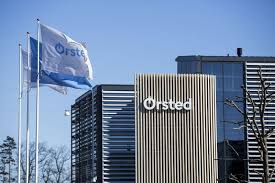Spain is at a decisive moment for the development of floating offshore wind energy , one of the major strategic opportunities for the energy transition and a high-value-added industrial driver. The Offshore Wind Forum and the Wind Energy Business Association (AEE) warn that the lack of regulatory progress and planning for the first auctions and the lack of a national “pilot” market jeopardizes the industrial positioning Spain has gained over the last 10 years in a disruptive technology such as floating wind. Therefore, it is necessary to approve the Ministerial Order regulating the first floating offshore wind auction now .
PILOT MARKET IN THE CANARY ISLANDS
The “pilot” market at a national level involves the installation of the equivalent of 3 or 4 offshore wind farms (approximately 1,000 MW), which would be available from 2033. The floating wind farms will have a generation capacity that will be 30-40% better than their onshore equivalents and will comply with the technological advances, authorizations and protocols necessary to guarantee the safe operation of the electrical system.
The ideal location for the first wind farm is the Canary Islands due to the extra cost of current electricity generation, which is five times higher than that of the peninsula , and due to the political consensus and the existing industrial fabric in the archipelago. Taking into account the most recent data published by the System Operator through the ESIOS portal on the average recognized cost of generation with fossil fuels in Gran Canaria , and comparing it with the generation efficiency of a floating offshore wind farm that had the latest technology and dimensions suitable for Gran Canaria, the savings for the taxpayer would amount to more than €36 million (1) per year, only in terms of the difference in generation costs.
It should be noted that in 2024, Brent oil prices were relatively stable between €70 and €80/barrel, so the Canary Islands’ energy system is clearly vulnerable to potential price increases or volatility in fossil fuel prices, which offshore wind power will help mitigate.
Furthermore, the same floating wind farm would prevent the emission of more than 570,000 tons of CO2 per year . According to experts’ forecasts regarding the future price evolution of ETS, the annual savings in ETS rights could be well over €80 million per year.
Therefore, the urgent launch of an offshore wind auction in Gran Canaria, with a capacity of between 200 and 250 MW, could save taxpayers more than €116 million per year , once the facility comes into operation[2]. Every year that passes without progress will mean lost savings for everyone .
COUNTRY STRATEGY
Floating offshore wind is a national project that requires a systemic vision, political will, and determined collaboration. Countries such as France, the UK, and Italy have already overtaken us, also joining the integrated European electricity market and advancing port and shipyard infrastructure for floating wind. Other countries such as Portugal and Morocco are also taking decisive steps.
” Spain has the necessary companies, technology, and ports, but once the general regulatory framework is approved, we need to continue taking the next steps so that the industry can invest and plan. Launching the public consultation on the Ministerial Order is a necessary and urgent process ,” emphasizes Juan Virgilio Márquez , Director General of AEE .
Floating offshore wind power is an opportunity to consolidate a national value chain with significant export potential. Spain has 75% of the necessary industrial chain—engineering, shipbuilding, manufacturing, logistics, and wind farm operation—and leads the global technological development of floating wind power: 11 of the 13 floating platforms installed worldwide and 14 of the 50 global prototypes are of Spanish design .
The development of this technology requires a coordinated vision between technology, manufacturing, ports, and grid capacity , with a high level of investment and technology. A solid domestic market—even if it is only a “pilot” size—will allow us to maintain the Spanish industrial base, create skilled employment, drive innovation, and prevent the flight of technological and industrial capital to other countries that are moving more rapidly. Therefore, the sector considers it critical and urgent to have a plan for the first auctions , starting with the areas with the greatest consensus—such as the Canary Islands—and a national strategy that outlines the steps for the coming years. The approval of a Ministerial Order regulating the first auction in 2026 and an indicative timeline are essential to activate projects and guarantee the competitiveness of Spanish industry.
“ Spain has the opportunity to become one of the major European hubs for floating wind power, but if decisive action is not taken, that opportunity will vanish. The deployment of the first 1,000 MW planned by the PNIEC could generate more than 4,000 jobs , revitalize coastal regions, and position Spain as an international benchmark in the blue economy and sustainability. But inaction also has consequences, as many companies that have invested in our country in recent years due to the progress made will have to reorient their activities, ” warns the AEE .
COEXISTENCE OF OFFSHORE WIND WITH COASTAL ACTIVITIES
The sector is committed to environmental protection and coexistence with other coastal activities such as fishing and regional and local socioeconomic development. The combined surface area occupied by the first 1,000 MW will be less than 0.1% of the territorial sea . The farms will be located at a distance from the coast with a nearly negligible visual impact.
Based on the results of the recent study conducted by the IEO on the potential impact of wind power on fish stocks , the potential impacts of the “pilot” market (1,000 MW) will be practically imperceptible, as priority will be given to areas with the lowest fishing effort. The design process will be carried out in collaboration with all involved sectors. Coexistence with maritime activities is therefore guaranteed .
The sector reaffirms its commitment to harmonious development “among all” and respectful of the environment , based on rigorous environmental impact studies, dialogue with the fishing sector, and transparent public participation.
Juan Virgilio Márquez concludes, ” Ultimately, floating offshore wind power, besides being a national opportunity, is a lever for economic and social transformation for local communities . Spain cannot be left behind, as it has the resources, knowledge, and capacity to lead this energy revolution .”






























